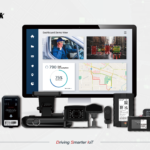It’s fair to say the developed world (and increasingly so for developing countries) relies on the internet to support a multitude of business and personal activities. Internet-based technology, such as cloud computing and online communication apps (such as video conferencing and team chat applications), are now essential parts of business technology. They have helped to transform the business world and have been integral in achieving effective remote and hybrid models of working. Internet access also enables people to research information online, buy products from virtually any location, and socialise with others via text, chat, and video calls.
However, it’s widely understood that the IT infrastructure and technology that allows users to experience fast and reliable internet access can vary considerably from one location to another. As a rule, people and businesses that are located in dense urban centres such as larger cities will typically enjoy faster internet access and a wider range of options when it comes to getting online.
In rural areas, especially in remote locations with small populations, it can be a challenge to find suitable internet service providers to enjoy fast browsing and the use of online applications. This has become known as the ‘digital divide,’ and it affects many developed countries around the world.
Thankfully, in rural communities, some options can help to overcome the digital divide. In this article, the existing issues with internet access in rural communities will be explored, with information on how satellite broadband provides one way to overcome the challenges in these areas.
Problems with fibre broadband access in rural areas
Many rural communities don’t have the IT infrastructure to support fast fibre optic internet connections. Suppliers may be reluctant to invest in the new networks that are needed, and if they do consider these upgrades, the cost to consumers can be much higher than they would be expected to pay if they lived in larger urban centres. Government grants and initiatives may be accessible to allow some of the funding of new tech infrastructures that are required, although this will vary by country and location.
In addition, the geographical challenges in some remote communities may make it difficult to lay cabled networks, especially if there’s a significant distance between one property to another.
Other solutions to rural internet access
One unique way to use existing technology to overcome the challenge of providing fast and reliable internet access to rural communities is by using the technology of 4G and 5G mobile networks.
In the UK, companies such as Dyfed Telecom can use existing mobile networks to provide fast and reliable internet access for some of the most remote communities that don’t have cabled networks. Dongle devices are used to connect computers to the mobile internet signal, and advanced antennas can be placed on the roofs of buildings to ensure that a strong signal is received and reliable internet access is delivered.
This mobile internet technology has helped thousands of remote homes and businesses get online across the UK. However, some areas may be located at a considerable distance from the nearest mobile network mast, and in these cases, satellite broadband may be the most effective option.
Tech needed for satellite internet access
The benefits of satellite broadband to remote towns and villages are numerous, making it an extremely attractive option for the most rural areas, especially those which have poor mobile network coverage and no pre-existing land-based internet infrastructure.
To enjoy fast satellite internet access, you’ll need a few key pieces of tech. The first is a modern satellite dish, which will be used to send and receive the signals from the orbiting satellite used to provide internet access. As a rule, the average cost for a modern satellite dish is around £400 in the UK, although, prices may vary depending on the model of the dish, the size, and the features it offers (such as being able to link to multiple satellites and the strength of the signal that it can receive). You’ll also need a satellite receiver if you wish to use satellite internet for TV, film, and other forms of media through your smart TV.
To Sum Up
Satellite internet access is becoming an increasingly popular option for remote rural communities that don’t have existing fibre infrastructure or those that only rely on existing copper wires from telephony systems. In many remote areas, even mobile signals can be weak or even non-existent due to the distance from the nearest mobile mast and geographical factors such as living in a valley, which restricts reception.
In these circumstances, satellite internet may be the best option. It may be slightly more expensive than some forms of fibre internet, but it’s extremely reliable in most cases, with only instances of severe weather affecting the service provided.


